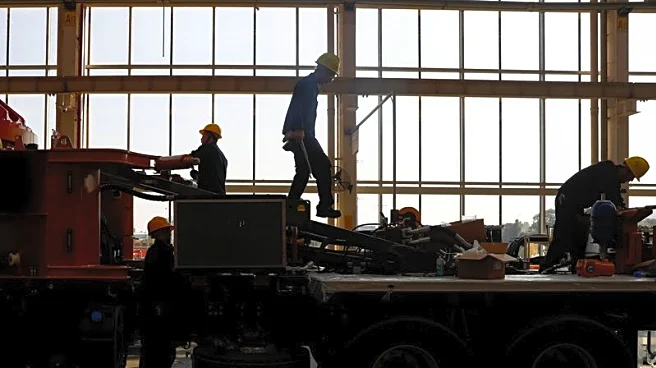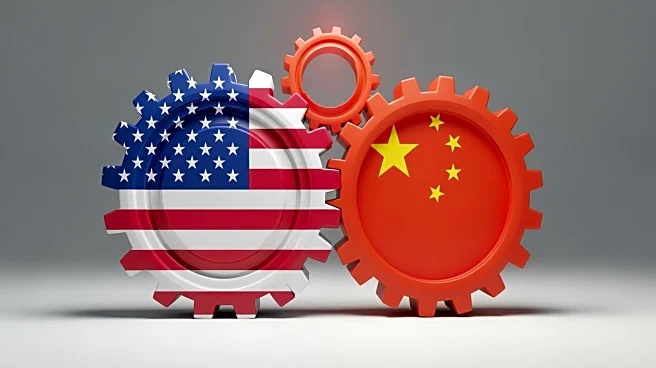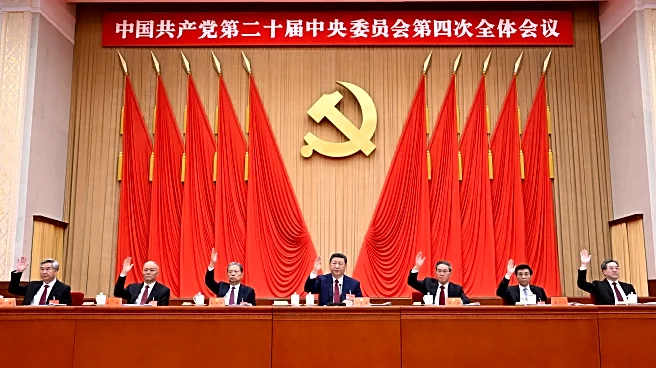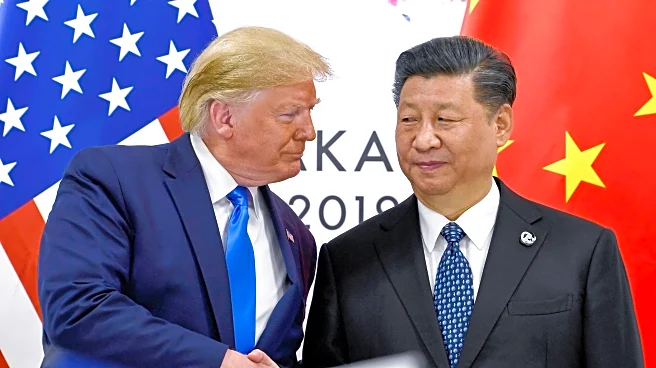What's Happening?
China's industrial profits have experienced significant growth, marking the fastest pace in nearly two years. In September, profits rose by 21.6%, following a 20.4% increase in August, according to data
from the National Bureau of Statistics. This growth is attributed to measures aimed at curbing overcapacity and rebalancing the economy, as well as a slight rebound in the producer price index. Despite these gains, China's economy faces challenges such as a prolonged property slump and a fragile job market. The government has reaffirmed its commitment to expanding domestic consumer demand while maintaining a focus on manufacturing and technological self-reliance.
Why It's Important?
The surge in industrial profits is a positive indicator for China's economy, suggesting that efforts to address overcapacity and rebalance economic structures may be effective. This development is crucial as China navigates trade tensions with the United States and seeks to sustain growth amid external demand dependencies. The increase in profits could bolster confidence among policymakers and investors, potentially leading to further economic stimulus measures. However, the reliance on state-owned firms and external demand poses risks to long-term stability, highlighting the need for continued economic reforms.
What's Next?
China's leadership is expected to continue implementing policies that support domestic demand and manufacturing growth. As the government rolls out its new five-year plan, further measures to stimulate the economy may be introduced. Analysts anticipate a decline in industrial profit growth in October due to fading favorable base effects. The ongoing trade tensions with the United States and other partners may influence future economic strategies, as China seeks to balance its manufacturing sector's central role with the need for structural adjustments.
Beyond the Headlines
The focus on manufacturing and technological self-reliance reflects China's strategic priorities amid global economic shifts. The country's efforts to rebalance its economy could lead to long-term changes in its industrial landscape, potentially affecting global supply chains. The emphasis on high-tech and equipment manufacturing sectors may drive innovation and competitiveness, positioning China as a key player in the global market. However, the challenges of a property slump and indebted local governments remain significant hurdles to achieving sustained economic growth.













